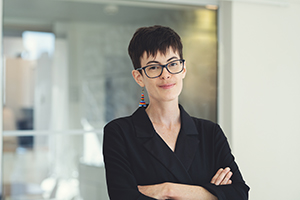About the project
This project investigates the contemporary use of the Norwegian-based urban vernacular in Oslo.
The research will be run collaboratively between the researcher and participants, following inspiration from citizen science initiatives. Different generations of participants will actively study each other's linguistic practices, working with the researcher in all stages of the research process, from data collection, transcription and through the analyses.
The project will also consider how participants understand space, and whether the use of such a speech style is tied to certain places in Oslo.
The theoretical background for the project draws on different areas, such as youth varieties and multiethnolectal speech styles (Rampton 2009; Githiora 2018), repertoire studies (Blommaert & Backus 2011; Busch 2015), (trans)languaging (Jørgensen et al. 2011; García & Li Wei 2014) and sociolinguistic spaces (Liebscher & Dailey-O’Cain 2013; Juillard 2016) in order to understand the impact of urban speech styles on participants’ linguistic repertoires and their relation to space.
The project will be conducted in a qualitative framework. As well as drawing inspiration from citizen science, the project will use a combination of methods, such as ethnographic-based methods, for example participant observation, interviews and linguistic biographies. In addition, the project will use visual methods which engage with space, such as linguistic landscapes.
One aim of the project is to triangulate analyses and incorporate different perspectives into all stages of the research. The project set up is intended to be constructed in such a way as to allow and encourage critical perspectives from participants and researchers when considering how, why, and where people use the Oslo speech style.
This postdoctoral project is a sub-project of Urban Speech.
Objectives
- To see how people use the Oslo urban speech style as part of their daily lives
- To investigate if using the speech style has any effect on their linguistic repertoires
- To study how people perceive of space(s) where the speech style is used
References
Blommaert, Jan & Ad Backus. 2011. Repertoires revisited: “Knowing language” in superdiversity. Working Papers in Urban Language & Literacies 67. 1–26.
Busch, Brigitta. 2015. Linguistic repertoire and Spracherleben, the lived experience of language. Working Papers in Urban Language & Literacies 148. 1–16
García, Ofelia & Li Wei. 2014. Translanguaging: language, bilingualism and education (Palgrave Pivot). Basingstoke, Hampshire, New York: Palgrave Macmillan
Githiora, Chege J. 2018. Sheng: rise of a Kenyan Swahili vernacular. Woodbridge, Suffolk: James Currey
Jørgensen, J. Normann, Martha Sif Karrebæk, Lian Malai Madsen & Janus Spindler Møller. 2011. Polylanguaging in superdiversity. Diversities 13(2). 23–37
Juillard, Caroline. 2016. L’espace sociolinguistique et les actes de langage. La Linguistique 52(1). 91–124
Liebscher, Grit & Jennifer Dailey-O’Cain. 2013. Language, space and identity in migration (Language and Globalization). 1st edition. Houndmills, Basingstoke, Hampshire ; New York, NY: Palgrave Macmillan
Rampton, Ben. 2009. Interaction Ritual and Not Just Artful Performance in Crossing and Stylization. Language in Society 38(2). 149–176. doi:10.2307/40207944
Duration
2020-2022
